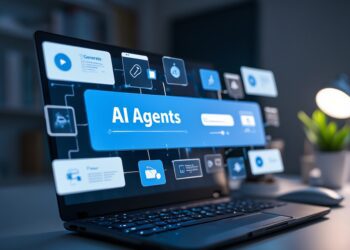AI is no longer a promise of the future, but the defining technology of our time. These days manufacturers are not impressed by AI pilot projects; they expect solutions that deliver measurable impact and a rapid return on investment (ROI).
According to the World Economic Forum, AI could add up to $15.7 trillion to the global economy by 2030, with nearly half of that driven by productivity gains alone. European manufacturers, who still generate nearly 15% of the EU’s GDP, could significantly increase this share if they lead the transformation rather than follow it.
The application layer advantage
Despite Europe’s leadership in industrial know-how and deep domain expertise, too many companies struggle to cross the chasm from experimentation to scaled deployment. A recent Bitkom study in Germany revealed that only around 20% of companies successfully use AI in daily operations, while nearly 80% remain stuck in the pilot stage or have yet to start.
The main challenge lies in deployment; the key to solving it is the application layer. Europe must shift focus from building models for their own sake to embedding AI in solutions that solve concrete business problems. In other words, we need less AI as a technology showcase and more AI as an everyday business tool. AI applications should be the starting point for companies, especially in regulated and complex sectors such as manufacturing, healthcare and mobility. For example, the Siemens Digital Lighthouse factory in Erlangen deployed AI, digital twins and robotics across more than 100 use cases, achieving a 69% boost in productivity and a 42% reduction in energy use over four years.
Here, Europe has a global advantage: industry-specific knowledge and high-quality domain data. By embedding that expertise into AI-powered applications in areas like operations, procurement or finance, we can turn European complexity into European competitiveness. Often-overlooked tabular models (trained on structured data instead of unstructured data) allow manufacturers to harness data efficiently, which is particularly valuable where auditability is essential.
As AI adoption accelerates, regulation should not be a roadblock but a strategic lever that safeguards trust while enabling responsible innovation. Well-calibrated, it will not only set the guardrails for safety, but also accelerate the deployment of application-layer AI in the industrial sectors, turning cutting-edge technology into day-to-day competitiveness.
The EU AI Act, the world’s first comprehensive AI law, is designed to strengthen global trust by setting a high bar for safety, transparency and accountability. Crucially, it harmonizes rules across the EU member states, preventing a patchwork of national laws that could fragment the single market and deter investment. For manufacturers, this harmonization is essential to ensure consistency, legal certainty and a level playing field. Without it, legal fragmentation and uncertainty could undermine competitiveness and slow the adoption of AI.
However, like any pioneering regulation, the AI Act must be interpreted and applied with real-world complexities in mind. If applied in an overly rigid or one-size-fits-all manner, it risks unintentionally stifling innovation – especially in fast-evolving areas such as agentic AI. Industrial AI requires a different regulatory lens than consumer-facing AI, as it operates in controlled environments, under contractual obligations and often within certified safety frameworks.
A strategy that works for Europe
Europe’s AI strategy for manufacturers should rest on three pillars:
- Prioritize guidance and best practices for industrial AI, giving companies clarity without imposing excessive compliance burdens.
- Invest in regulatory sandboxes that allow safe experimentation with advanced AI systems, enabling innovation within a controlled environment.
- Coordinate closely with international partners to align AI standards and certification schemes, ensuring European companies remain competitive in global supply chains.
By following this approach, Europe can turn its manufacturing base into an AI powerhouse; not by chasing brute-force compute capacities, but by mastering high-value, sector-specific AI where the continent can set the global standard. This means excelling in meaningful, responsible and scalable AI deployment that plays to its industrial strengths. This is how Europe can convert its deep domain expertise, world-class engineering and high standards into a decisive global advantage.












